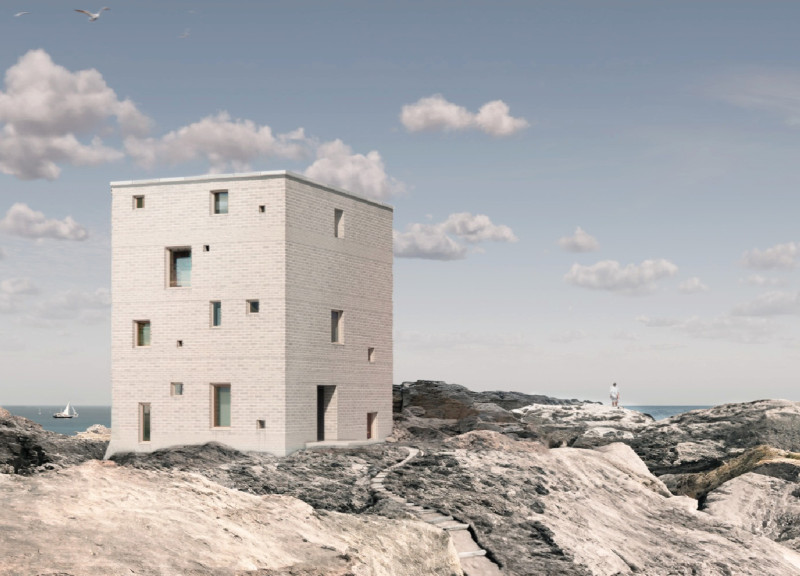5 key facts about this project
One of the most significant elements of this project is its emphasis on sustainability and environmental consciousness. The design integrates natural materials such as timber, concrete, and glass, which not only contribute to the aesthetic appeal but also ensure durability and energy efficiency. The façade, composed of locally sourced timber cladding, creates a visual connection to the surrounding landscape while offering natural insulation. The combination of these materials reflects a commitment to responsible architecture, addressing the growing demand for eco-friendly structures in urban environments.
The project embraces open-plan layouts that encourage fluid movement between spaces, fostering a sense of community and collaboration. Large, strategically placed windows allow an abundance of natural light to filter through, enhancing the interior ambiance and reducing energy consumption. The thoughtful orientation of the building optimizes views of the surrounding environment, establishing a seamless dialogue between indoor and outdoor spaces. This relationship with nature is further reinforced by the incorporation of green roofs and landscaped terraces, which promote biodiversity and provide residents with tranquil outdoor areas.
Within the building, various functional zones cater to diverse activities. The central atrium acts as the heart of the project, offering a venue for gatherings, events, and informal interactions. This space is designed as a flexible area, capable of adapting to the changing needs of its users. Surrounding this atrium, private spaces including offices, meeting rooms, and lounges present a balance between collaboration and seclusion, catering to different work styles and preferences.
The attention to detail is evident throughout the architectural designs. Elements such as acoustic panels, thoughtfully integrated technology, and ergonomic furnishings contribute to a comfortable working environment. The careful selection of materials extends to interior finishes where warm woods and soft textiles create an inviting atmosphere. The overall experience within the building is enhanced by the incorporation of biophilic design principles, which not only promote well-being but also create a nurturing environment for creativity and productivity.
Another key aspect of this architectural project is its unique form. The building's silhouette—characterized by angular lines and varying heights—creates visual interest while integrating with the topography of the site. This approach reflects a nuanced understanding of spatial dynamics, allowing the structure to stand out without overpowering its surroundings. The innovative roof design not only serves aesthetic purposes but also aids in rainwater harvesting, further emphasizing the project’s commitment to sustainability.
The integration of technology is a vital component of the design, with smart systems embedded throughout the building. These technologies facilitate efficient energy management, occupancy tracking, and smart environmental controls, ensuring a responsive and adaptable environment. This forward-thinking approach to architecture not only enhances daily operations but also positions the building as a sustainable model for future developments.
In conclusion, this architectural project is a testament to contemporary design principles, emphasizing sustainability, community, and innovation. It represents a new paradigm in architecture where form meets function, and the user experience is paramount. To fully appreciate the intricacies of this project and its various elements, readers are encouraged to explore the architectural plans, sections, designs, and ideas that bring this vision to life. The details of this project offer insight into a thoughtful architectural language that speaks to the needs of today while mindful of the future.


 Xavier Arés,
Xavier Arés, 




















